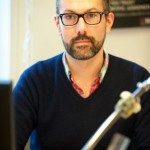Lien vers Pubmed [PMID] – 27480100
Transfusion 2016 Oct;56(10):2597-2601
BACKGROUND: Recent studies conducted in developed countries described hepatitis E virus (HEV) as an emerging infectious threat to blood safety. However, data on HEV among blood donors from southeast Asia are lacking.
STUDY DESIGN AND METHODS: Between July and August 2014, we assessed the presence of HEV immunoglobulin (Ig)G and IgM in 301 Cambodian blood donors. All samples were further tested for the presence of HEV RNA using an in-house reverse transcription-polymerase chain reaction. ORF2/ORF3 phylogenetic analysis was performed on positive HEV RNA specimens.
RESULTS: We found HEV IgG in 28.2% of blood donors from Cambodia. Three blood donors tested positive for HEV IgM with three distinct patterns: IgM(+)/IgG(-)/RNA(-) (n = 1), IgM(+)/IgG(+)/RNA(-) (n = 1), and IgM(+)/IgG(+)/RNA(+) (n = 1). Thus, the prevalence rates of HEV IgM and HEV RNA were 1.0 and 0.3%. Interestingly, the viremic blood donor harbored a HEV strain that belonged to Genotype 3 (HEV-3) and clustered with a Cambodian riverine HEV-3 isolate.
CONCLUSION: Due to the high frequency of Cambodian blood donors with positive HEV IgG, we conclude that HEV is endemic in this country. Large-scale studies must be considered to determine whether Cambodian blood donation screening is warranted to enhance blood safety in regard to HEV. In addition, our findings suggest that river water may be a significant source of exposure to HEV-3.

